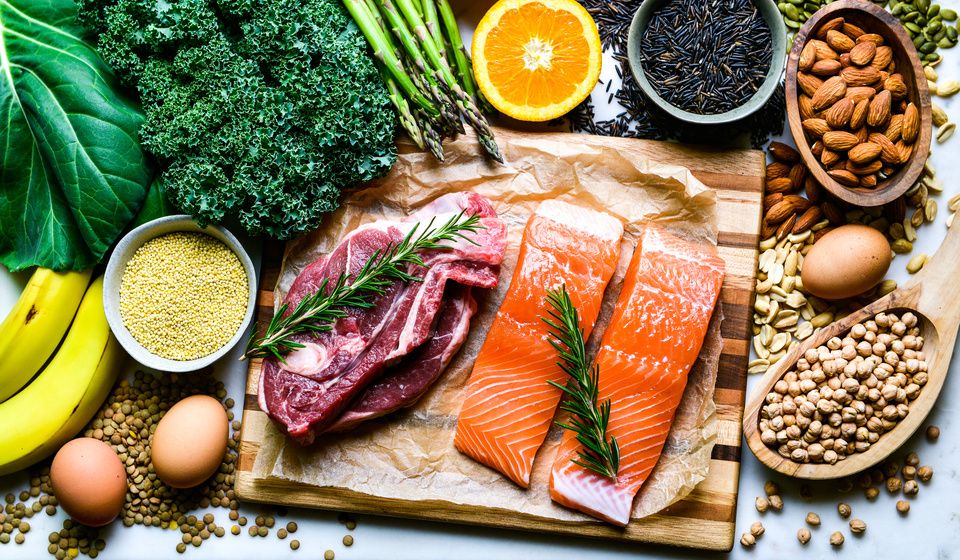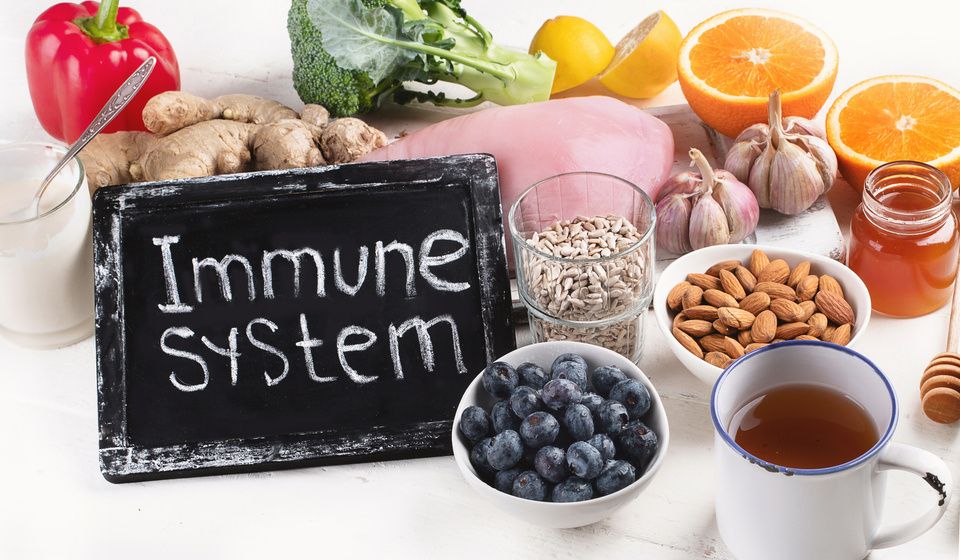Why Gut Function Determines Nutrient Absorption
Ali Segersten Aug 17, 2025
When we talk about nutrient density, there’s one essential truth. You are not just what you eat…you are what you absorb.
Most of us assume that if we fill our plates with nutrient-dense foods, our bodies will automatically use them. But absorption isn’t automatic. Nutrient deficiencies can certainly stem from poor intake, but often more so from impaired digestion and absorption.
The gut is not just a passive tube—it’s an intricate, living system that determines whether your food becomes fuel, or simply passes through. Low stomach acid, insufficient digestive enzymes, dysbiosis, leaky gut, or chronic stress can all block the body’s ability to fully access the nutrients in food.
This is why real nourishment is both about what you eat and how your body is able to receive it.
Three Key Stages of Digestion
Nutrient absorption can falter at three main stages of digestion:
1. Stomach Acid (Hydrochloric Acid)
Hydrochloric acid unlocks nutrients from food and lays the foundation for absorption.
- Releases vitamin B12 from protein and creates the ideal pH for intrinsic factor to bind B12 downstream, enabling absorption in the ileum.
- Ionizes minerals such as calcium, iron, zinc, and magnesium so they can be absorbed downstream.
- Denatures proteins, preparing them for enzymatic breakdown.
- Kills pathogens—low acid increases infection risk, further impairing nutrient absorption.
Nutrient Deficiencies from Low Stomach Acid:
Without adequate stomach acid, key nutrients cannot be released or ionized for absorption. This often leads to deficiencies in vitamin B12, calcium, iron, zinc, magnesium, and amino acids (the building blocks of protein). Over time, low stomach acid can also increase infection risk, which further disrupts absorption.
2. Digestive Enzymes & Bile
Enzymes from the pancreas, brush border, and bile complete the breakdown of food into absorbable units.
- Pancreatic enzymes (proteases, amylase, lipase) reduce proteins, starches, and fats into amino acids, simple sugars, and fatty acids.
- Bile acids emulsify fats, enabling absorption of essential fatty acids, carotenoids, and fat-soluble vitamins (A, D, E, K).
- Brush border enzymes (lactase, sucrase, peptidases) finish carbohydrate and peptide digestion. Without them, carbs and peptides ferment, leading to bloating, diarrhea, and poor mineral absorption.
When enzyme function falters, protein, fat, and carb digestion all become compromised, leaving you depleted even if you’re eating nutrient-rich meals.
Nutrient Deficiencies from Poor Enzyme and Bile Function:
Insufficient enzymes or bile can lead to deficiencies in amino acids, essential fatty acids, and fat-soluble vitamins (A, D, E, K). Additionally, undigested carbohydrates and peptides (protein fragments) often ferment in the gut when brush border enzymes are lacking. This fermentation produces byproducts that damage the intestinal lining and disrupt the microbiota. When the microbiota is imbalanced, the pH shifts, brush border damage accumulates, and the transport proteins we rely on for mineral uptake don’t function properly. The result is reduced absorption of key minerals like magnesium, zinc, and calcium.
3. Intestinal Lining & Villi
The small intestine is lined with villi and transporters that absorb nutrients at different sites:
- Duodenum (upper): iron, calcium, magnesium, zinc, copper, iodine (absorbed throughout the small intestine)
- Jejunum (middle): vitamins A, D, E, K, folate, B vitamins, vitamin C, amino acids, fatty acids (from lipid digestion), calcium, magnesium
- Ileum (lower): vitamin B12 (with intrinsic factor), bile salts, vitamin C, some folate
When the gut lining is disrupted by inflammation, food sensitivities, infection, or stress, absorption falters, even if you’re eating a nutrient-dense diet. This is why conditions like celiac disease, Crohn’s disease, or chronic gut inflammation can create widespread deficiencies.
Healthy villi = full access to the nutrition your food carries.
Nutrient Deficiencies from Damaged Villi:
Loss of villi or transport capacity in the small intestine severely limits nutrient absorption. This can result in deficiencies of iron, calcium, magnesium, zinc, iodine, folate, B vitamins, amino acids, fatty acids, vitamin B12, vitamin C, and vitamin K. These widespread deficiencies are common in chronic gut conditions such as celiac disease, Crohn’s disease, and long-standing gut inflammation, and can manifest as fatigue, anemia, poor immunity, neurological changes, and growth delays in children.
Why Gut Health Comes First
If nutrient-dense foods are so powerful, why don’t we start there?
Remember, you’re not just what you eat...you are what you absorb. And absorption depends on the health of your gut, your nervous system, and your immune system.
- Food sensitivities contribute to chronic low-grade inflammation and can disrupt the integrity of the intestinal lining
- Nervous system balance is essential because you can’t digest properly in fight-or-flight. Sympathetic dominance reduces digestive secretions and motility, impairing nutrient absorption. Activating the vagus nerve through deep breathing, relaxation, and mindful eating helps shift the body into a parasympathetic 'rest and digest' mode.
- Gut microbiome balance supports nutrient absorption and metabolism. Beneficial bacteria produce short-chain fatty acids that heal the gut lining. Consuming a diet high in pre-biotic foods feeds beneficial microbes that help heal the gut.
This is why earlier Gifts of Health posts focused on uncovering hidden food sensitivities, microbiome support, and removing dietary and environmental stressors. Each step prepared your body to actually use the nutrients in your food, and reduce further depletion.
How to Support Better Digestion & Absorption
Optimizing nutrient absorption starts with creating the right conditions for digestion to work. Here are a few simple, powerful steps you can take:
1. Activate “Rest & Digest” Mode
Take 3 to 5 slow, deep breaths before eating. Lighting a candle at dinner time can also help set the stage for better digestion. These two simple rituals help activate the vagus nerve, turn on stomach acid and enzymes, and shift your body out of fight-or-flight mode so it can focus on breaking down and absorbing your food.
2. Chew Thoroughly
Digestion starts in the mouth. Slow down, chew until food is almost liquid. This signals the stomach and pancreas to get ready for action.
3. Eat Bitters or Lemon Before Meals
A few drops of herbal bitters, arugula salad, or lemon water can gently stimulate stomach acid and bile flow.
4. Support Enzyme Function
If you have known pancreatic insufficiency, have had your gallbladder removed, or struggle with chronic bloating, digestive enzyme or bile support supplements (taken with meals) may be very helpful. A plant-based digestive enzyme taken with the first few bites of a meal is a gentle way to begin supporting digestion, especially if you suspect poor breakdown of food, bacterial overgrowth, or nutrient deficiencies.
5. Heal & Seal the Gut Lining
Focus on anti-inflammatory, gut-healing foods such as bone broth, gently cooked vegetables, omega-3 fats, cruciferous vegetables, and colorful, polyphenol-rich foods (like berries and green tea). Removing food sensitivities and processed foods helps calm inflammation so the villi can regenerate and transporters can work properly—restoring your ability to fully absorb the nutrients you eat.
6. Feed Your Microbiome
Enjoy prebiotic foods like onions, garlic, leeks, asparagus, and cooked-then-cooled potatoes or rice (resistant starch). These foods feed your beneficial bacteria, which in turn help maintain a healthy gut lining, reduce inflammation, and support proper nutrient absorption.

Bringing It All Together
Fully absorbing the nutrients from your food depends on the state of your gut and nervous system.
- Food sensitivities inflame and disrupt the gut lining.
- Chronic stress weakens stomach acid and enzyme secretion.
- Microbiome imbalances disrupt brush border enzymes, generate toxins, and compete with your body for nutrients.
The path to nutrient density doesn’t just begin with what’s on your plate. It begins with healing your gut, calming your nervous system, and uncovering hidden food sensitivities.
For more on how to restore nutrient balance, explore Gift #8: Nourish with Missing Nutrients. It’s not only about eating more vitamins, minerals, protein, and essential fats. It’s also about creating the conditions for your body to absorb them.

About the Author
Alissa Segersten, MS, CN
Alissa Segersten, MS, CN, is the founder of Nourishing Meals®, an online meal-planning membership with over 1,800 nourishing recipes and tools to support dietary change and better health. As a functional nutritionist, professional recipe developer, and author of The Whole Life Nutrition Cookbook, Nourishing Meals, and co-author of The Elimination Diet, she helps people overcome health challenges through food. A mother of five, Alissa understands the importance of creating nutrient-dense meals for the whole family. Rooted in science and deep nourishment, her work makes healthy eating accessible, empowering thousands to transform their well-being through food.Nourishing Meals Newsletter
Email updates.






Add Comment